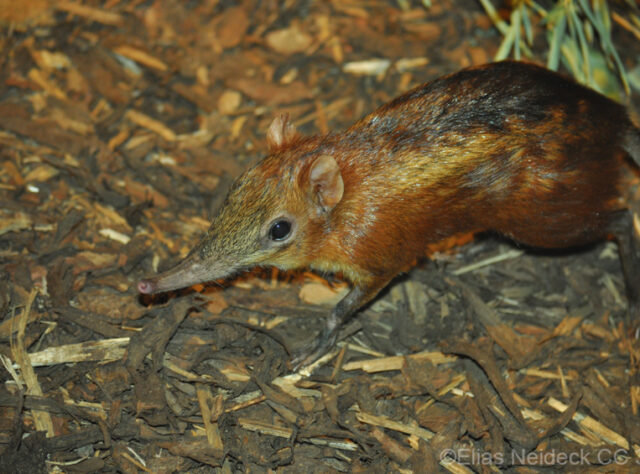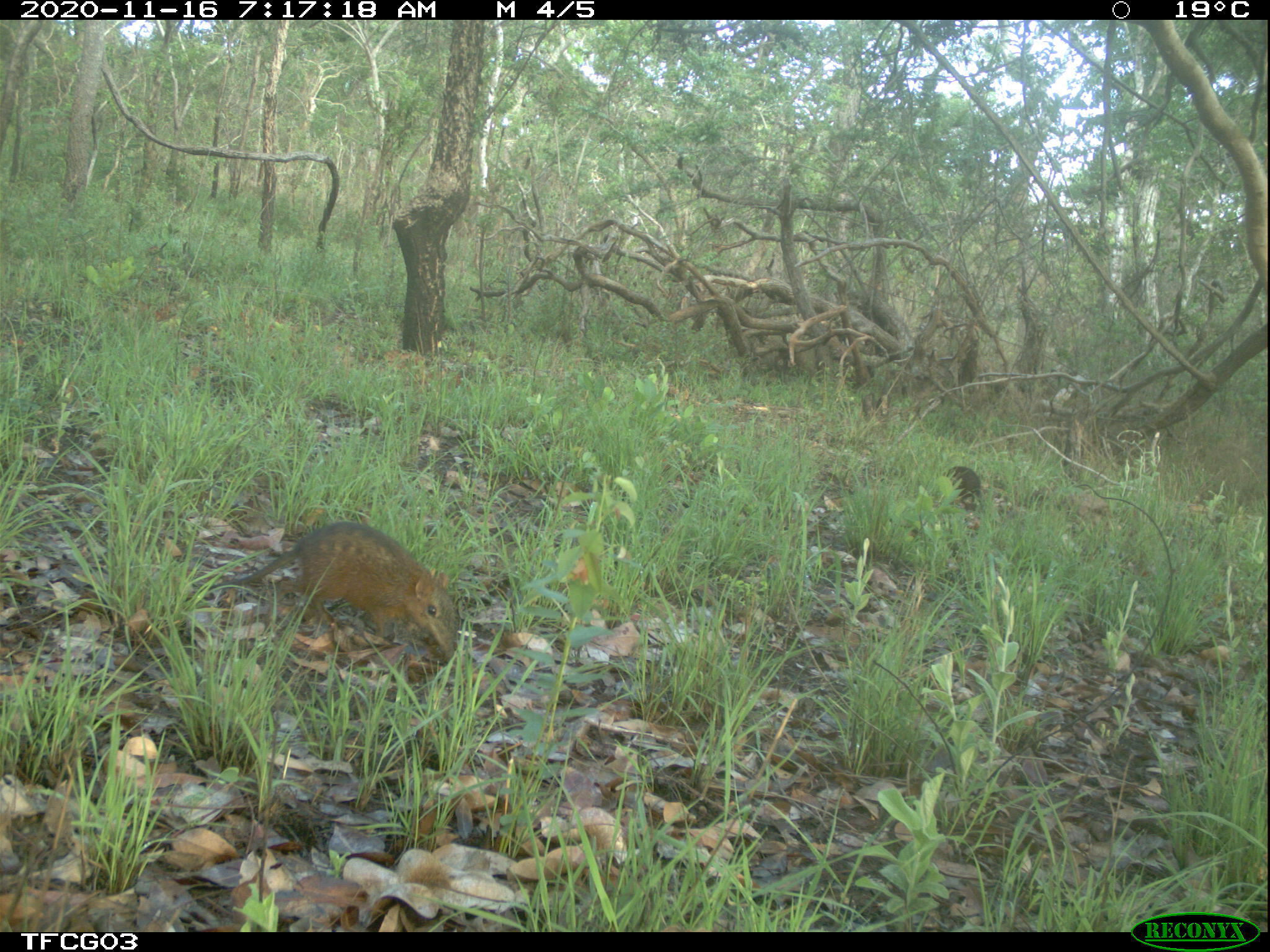
WLT partner TFCG will seek to create 10 reserves to protect a wildlife corridor home to Chequered Elephant Shrews – preserving the coastal forest leaf litter that is so key to these shrews. Image credit: Elias Neideck.
The elevation and isolation of Tanzania’s Rondo plateau has shaped a landscape of misty forest fragments packed with endemic, little-known life. This week, we’d like you to meet three miniature specialists you can make a difference for through our ‘Saving Tanzania’s Coastal Forests appeal.’ Yesterday we showcased the Rondo Bushbaby and today it’s the turn of the Chequered Elephant Shrew – a solitary insect eater and escape artist that needs these forests to thrive.
It is not every day a conservationist crosses paths with the Chequered Elephant Shrew but when one does, the experience is not easily forgotten.
For primatologist Andrew Perkin, past trips to the coastal forests of Tanzania created one such chance to glimpse this minute mammal in its home habitat. “This species is very hard to spot – it moves very gently across the forest floor and unlike some of the other elephant shrews, it doesn’t leave any trails,” he says. “Sometimes I’d see one as I stood very still waiting for something else and as soon as I lifted my camera, they would disappear.”
Frozen in the momentary stillness of a photograph, the uniqueness of Chequered Elephant Shrews becomes clear. Even among the already peculiar group that are elephant shrews more generally, this species’ unusual back patterning – a mix of chestnut and lighter hues – makes them stand out. Such colouring comes in handy both when trying to camouflage but also, and for a highly territorial species, when trying to keep other Chequered Elephant Shrews off one’s patch.

This is a camera trap snap of a Chequered Elephant Shrew, who scurry in the leaves of Tanzania’s coastal forest floor – foraging for insects and building leafy nests. Image credit: TCGF.
At 25-30 cm or so tail excluded, this species’ size makes it one of the longest elephant shrews. Even more remarkable, however, are the powerful, kangaroo-like back legs it uses to catapult away when surprised by predators like snakes.
Out in Tanzania’s forests, Andrew once saw this defensive mechanism in action. “I remember standing right next to one and it just sort of launched, burst out from under the leaf cover. These elephant shrews are escapists, with clever evasion strategies,” he says.
Saving the forest home of a leaf-reliant, insect-loving Elephant cousin
Understanding why there is an ‘Elephant’ in ‘Chequered Elephant Shrew’ comes easily when one notices their trunk-like long noses, but the connection goes beyond mere physical resemblance.
Chequered Elephant Shrews are linked to African Elephant, Aardvarks, Manatees or Golden Moles through their joint status as Afrotherian – a group of African species that share genetic and molecular similarities after emerging millions of years ago, at a time when the continent was isolated by water.

Chequered Elephant Shrew rely on a healthy leaf-littered forest floor in Tanzania’s Rondo Plateau – a gift WLT supporters can give through our appeal. Image credit: Andrew Perkin.
Such isolation meant, scientists believe, that insectivores, rodents and others could not reach Africa for much of the Cenozoic Era (the last 66 million years before present); and Afrotherian species were nature’s way of plugging that gap, a niche that the Chequered Elephant Shrew continues to fill today as an insectivore. Beetles, centipedes, termites: all are sought out by these solitary mammals and their long, prehensile noses.
For the Chequered Elephant Shrew, the leaf litter of Tanzania’s coastal forests is as crucial as it is for the endangered Rondo Bushbaby primates. Leaves supplement the shrews’ diet and provide shelter throughout their lives – they are the material these mammals carefully pile up to build nests and sleeping sites.
Like the Rondo Bushbaby – and like the shrew’s Afrotherian cousin the African Elephant – this reliance on a healthy forest ecosystem puts Chequered Elephant Shrews at risk from habitat loss and degradation. According to the International Union for Conservation of Nature (IUCN), the threat is particularly severe in the coastal areas of southern Tanzania – the very place you can help protect through our latest campaign.
This year, our ‘Saving Tanzania’s Coastal Forests’ appeal offers you the chance to protect the home of tiny specialists that cannot afford to lose it.
In Africa, the Chequered Elephant Shrew has spent millions of years leaping through leafy forest floors and with your help, it will continue to do so for the generations to come. Donations to our new campaign will allow to protect an area where these insect eaters are under particular pressure – 10 new reserves of coastal forest at a time when commercial farming is on the rise.

